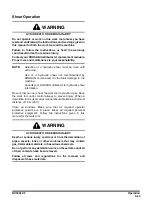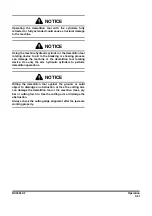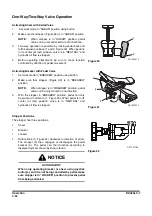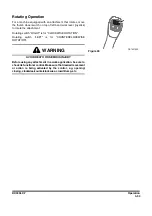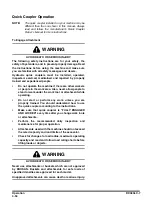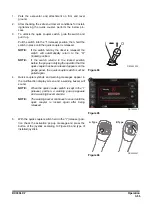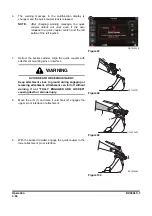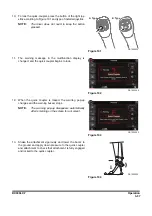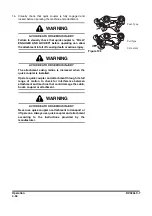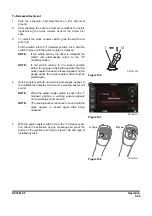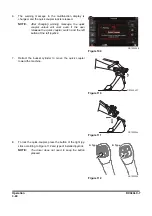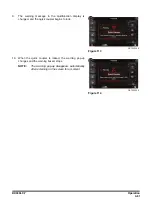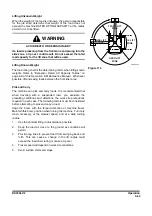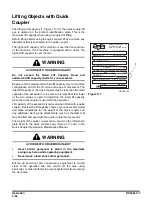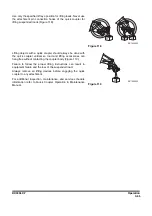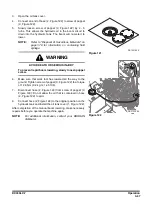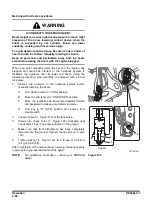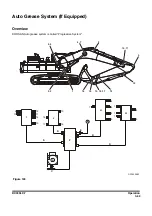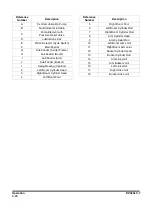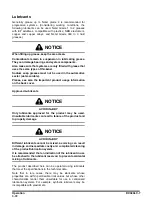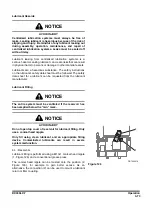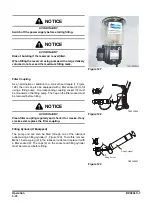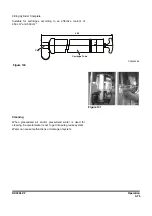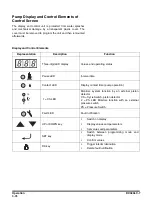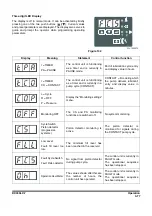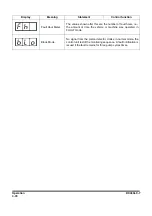
3-63
DX380LC-7
Lifting Unknown Weight
When the weight of the load is unknown, the person responsible
for the job shall determine that weight of the load does not
exceed the machine RATED LIFTING CAPACITY at the radius
at which it is to be lifted.
Lifting Known Weight
The load rating chart is the determining factor when lifting known
weights. Refer to "Excavator Rated Lift Capacity Tables" on
page 6-8 of this Operation & Maintenance Manual. Whenever
possible, lift and swing loads between the front idler area.
Pick and Carry
The machine can pick and carry loads. It is recommended that
when traveling with a suspended load, you evaluate the
prevailing conditions and determine the work site precautions
required in each case. The following factors must be considered
before attempting to pick and carry a load.
Align the boom with the forward direction of machine travel.
Maintain this boom position when turning the machine. Turn only
when necessary, at the slowest speed, and at a wide turning
radius.
1.
Use the shortest lifting radius distance possible.
2.
Keep the load as close to the ground as conditions will
permit.
3.
Provide tag lines to prevent load from swinging back and
forth. This can cause a change in the lift radius could
exceed the load chart rating or cause a tip over.
4.
Travel speed will depend on work site conditions.
5.
Avoid sudden starts and stops.
FRONT LIFT
ZONE
S
IDE LIFT
ZONE
S
IDE LIFT
ZONE
REAR LIFT
ZONE
HAAD
3
842
Figure 116
WARNING
AVOID DEATH OR SERIOUS INJURY
If a load is picked-up from the front zone and swung into the
side zone, a tip over could result. Do not exceed the rated
load capacity for the lift zone that will be used.

